About this detail of the Tiger
The Tiger tank had four large cooling fans located in the rear of the hull, two on each side, housed in aluminium duct units. These fans were driven by the engine. At the top rear of the HL210 engine, a single drive shaft connected it to a small gearbox fixed to the inside rear wall of the hull. Two more drive shafts led from this gearbox to the fan units on each side.
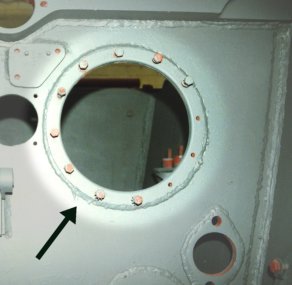
Matters were complicated by the Tiger's submersion capability. The fan units were located in floodable compartments, while the engine room was of course not floodable. There was a watertight wall between them, and the drive shafts needed to pass through it. This photo shows the wall, with all other equipment removed. The large hole indicated here is for the fan drive shaft.
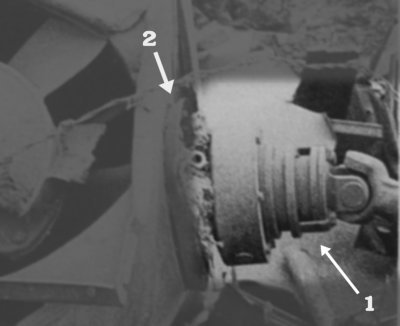
This is a fan unit from a shattered Tiger. Although damaged, it shows the equipment that fits in the hole above. On the left is a duct unit containing two fans. On the right, marked [1], is the friction clutch for the fan drive. At extreme right you can see the end of the drive shaft. Between the clutch and the fan unit there is a large dish, marked [2]. This gets bolted to the hole in the wall, making a waterproof seal.
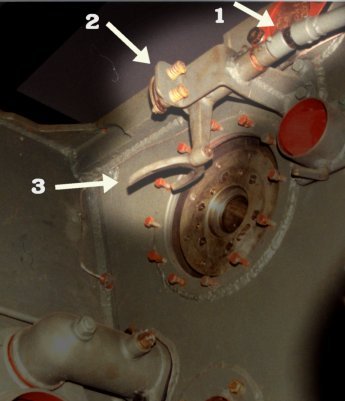
Looking into the Bovington Tiger during restoration, we can see more details. The drive shaft, the clutch and the waterproofing dish are not present, but we can see how the fan duct is accessible through the large hole in the wall.
This photo shows another aspect of the fan drive; the clutch could be disengaged manually. This was necessary for submerged travel. The crew need only turn two levers in the crew compartment, without opening the engine hatch; the levers would rotate shafts (marked [1]) whose other ends were mounted in support arms (marked [2]) and that would move grippers (marked [3]) that opened or closed the clutches.
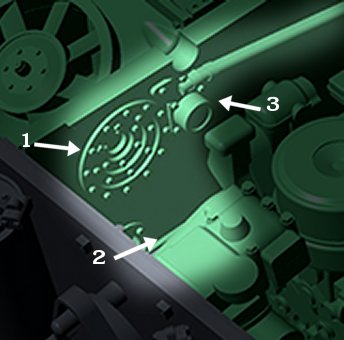
Despite its claim to offer a "full interior", Rye Field Model's kit RM5003 provides none of these mechanisms. This extract from their CAD shows the same area in a completed kit. The hole in the wall at [1] does not have the waterproofing seal or the large clutch unit. There is no connection to the gearbox at [2]. The clutch control rod is molded into the wall, but it should stand clear. The support arm and the clutch gripper mechanism at [3] are completely missing.
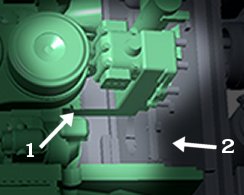
Another view of this area shows the gearbox fitted to the rear wall of the Tiger. But in Rye Field's kit, the gearbox is not connected to anything. There is no drive shaft from the engine at [1], and no drive shaft to the fan clutch at [2].